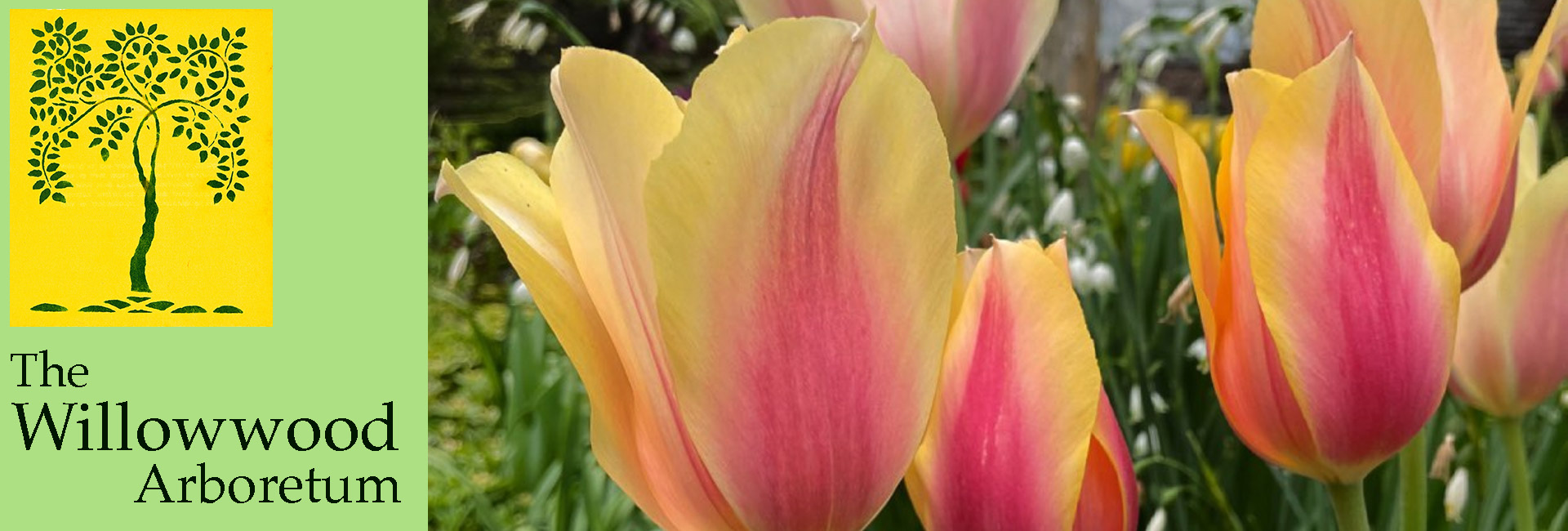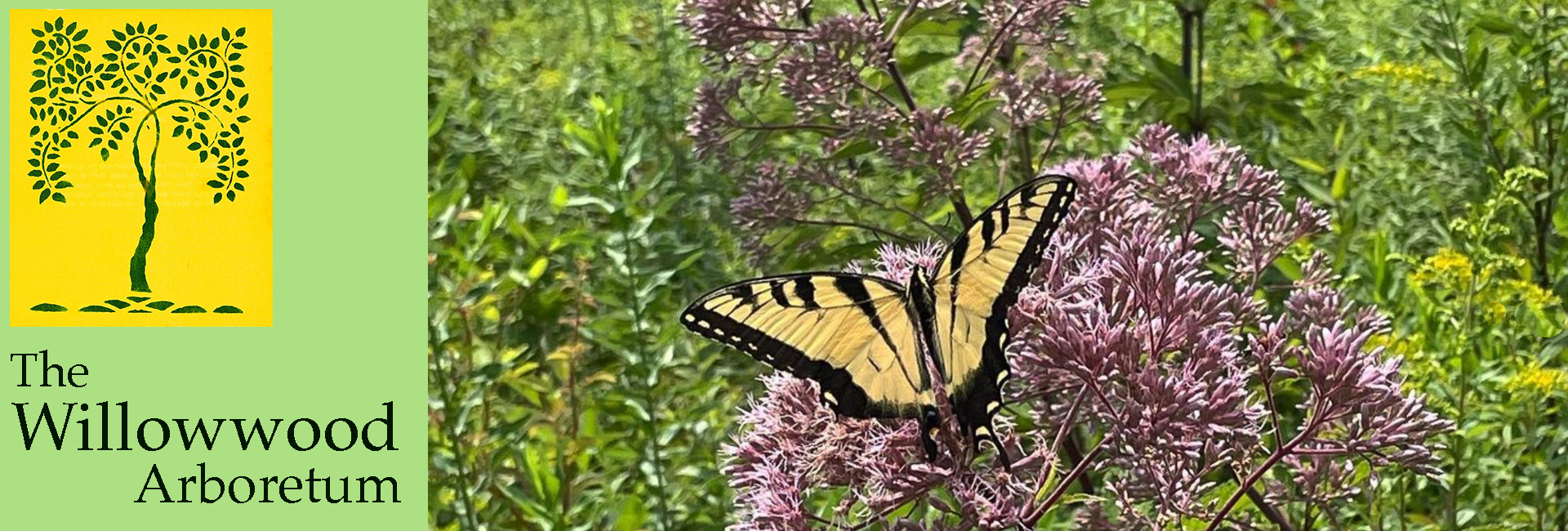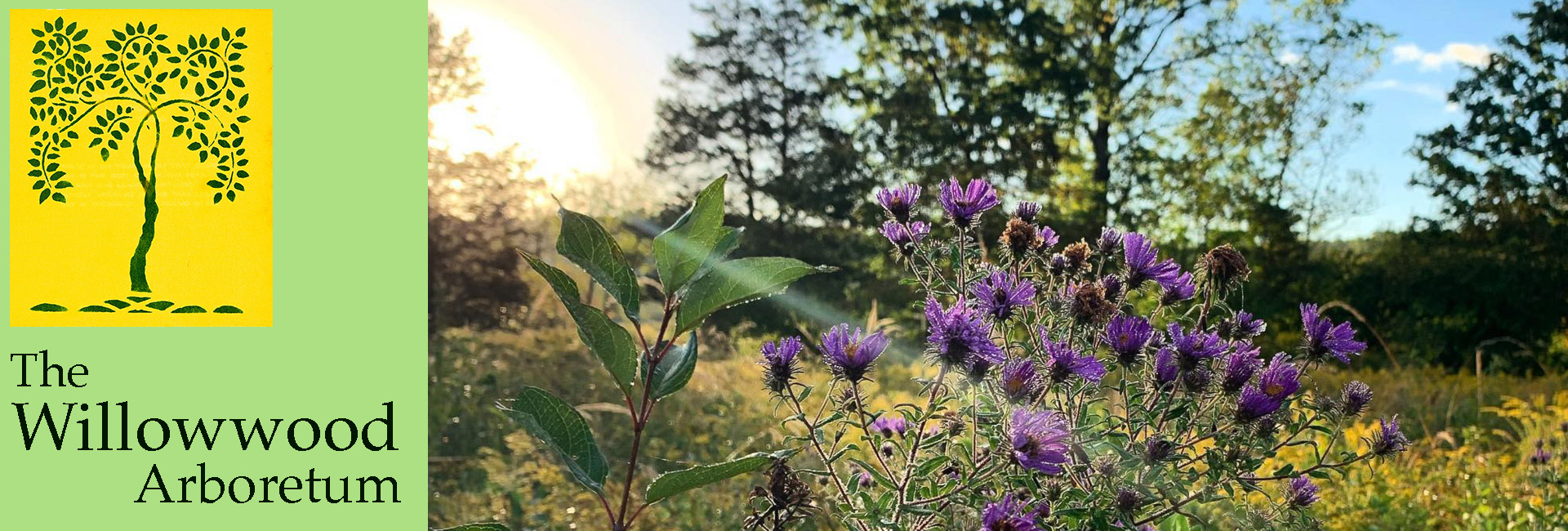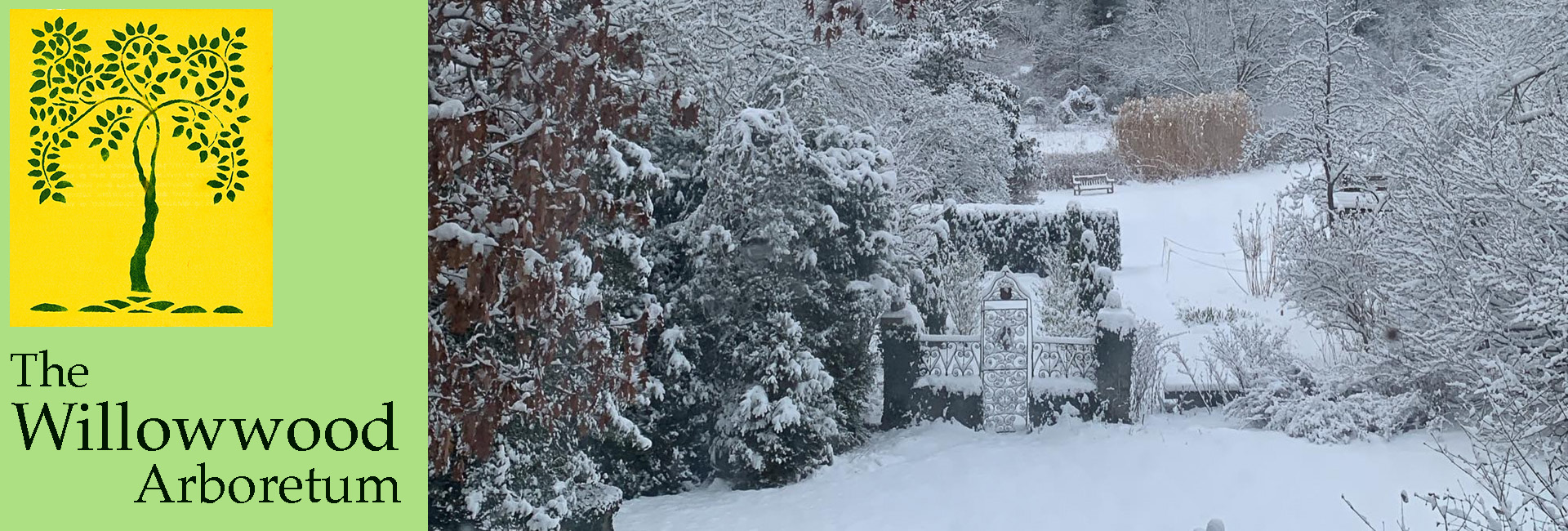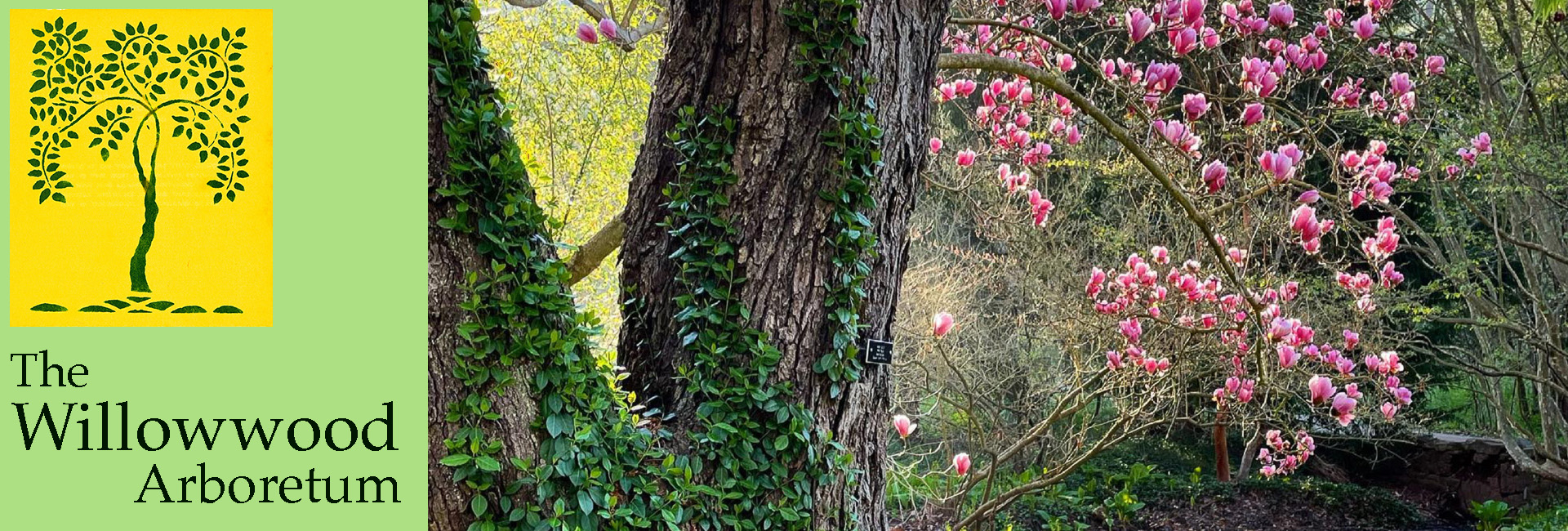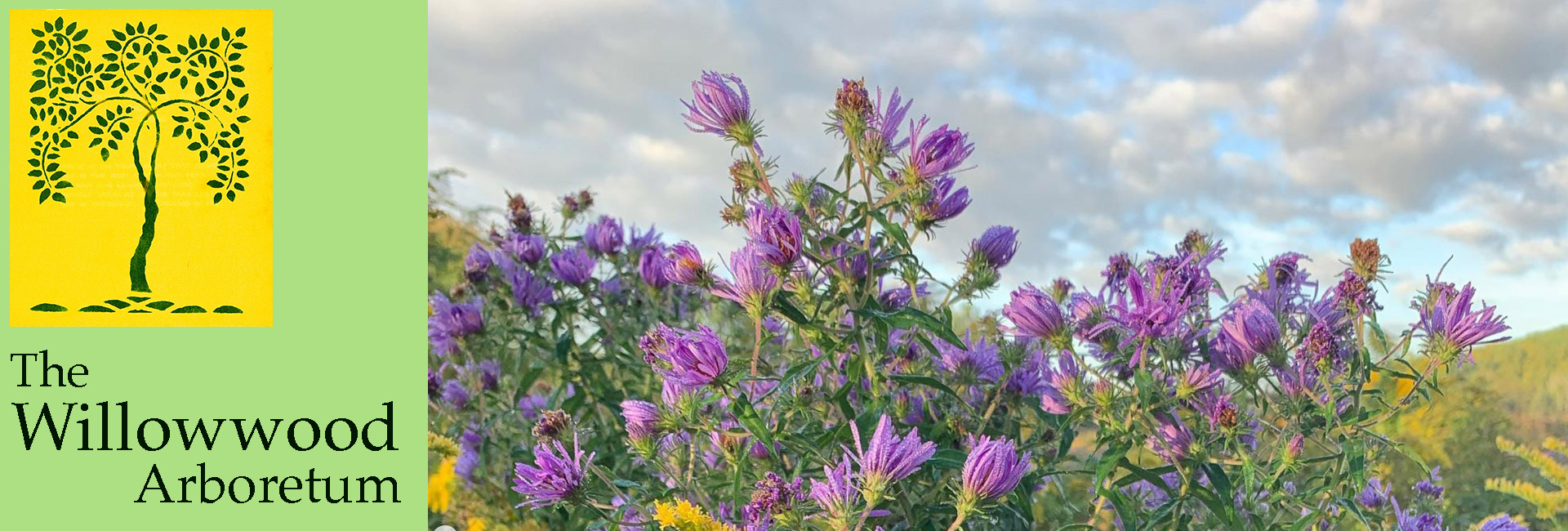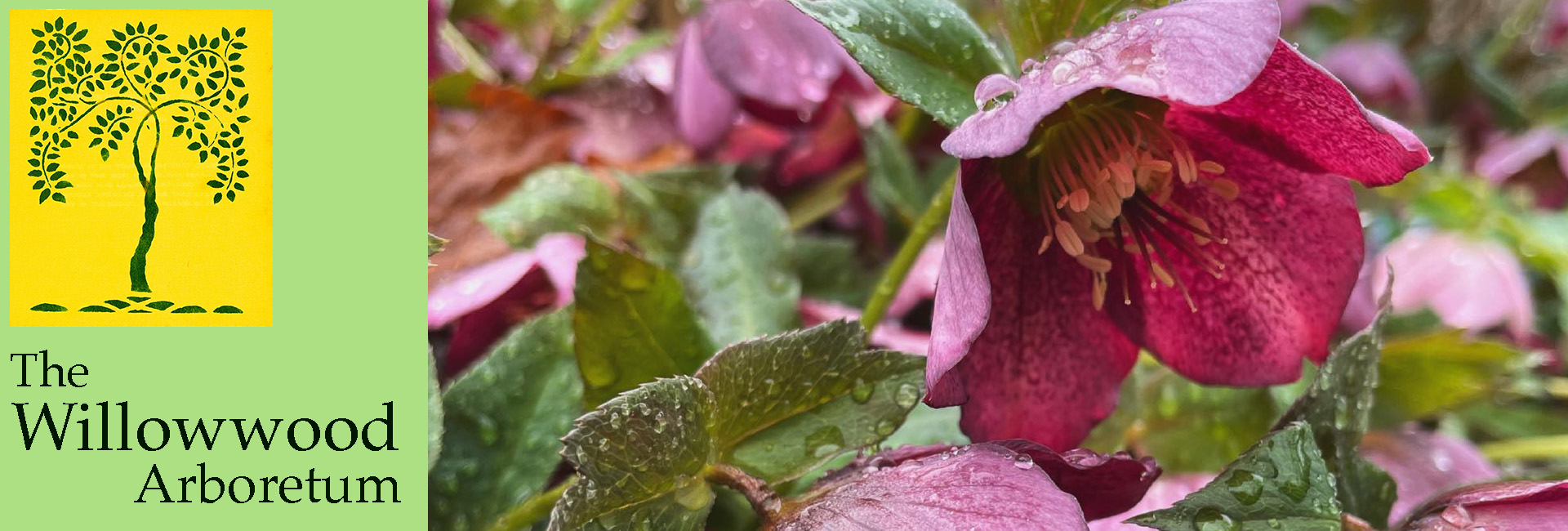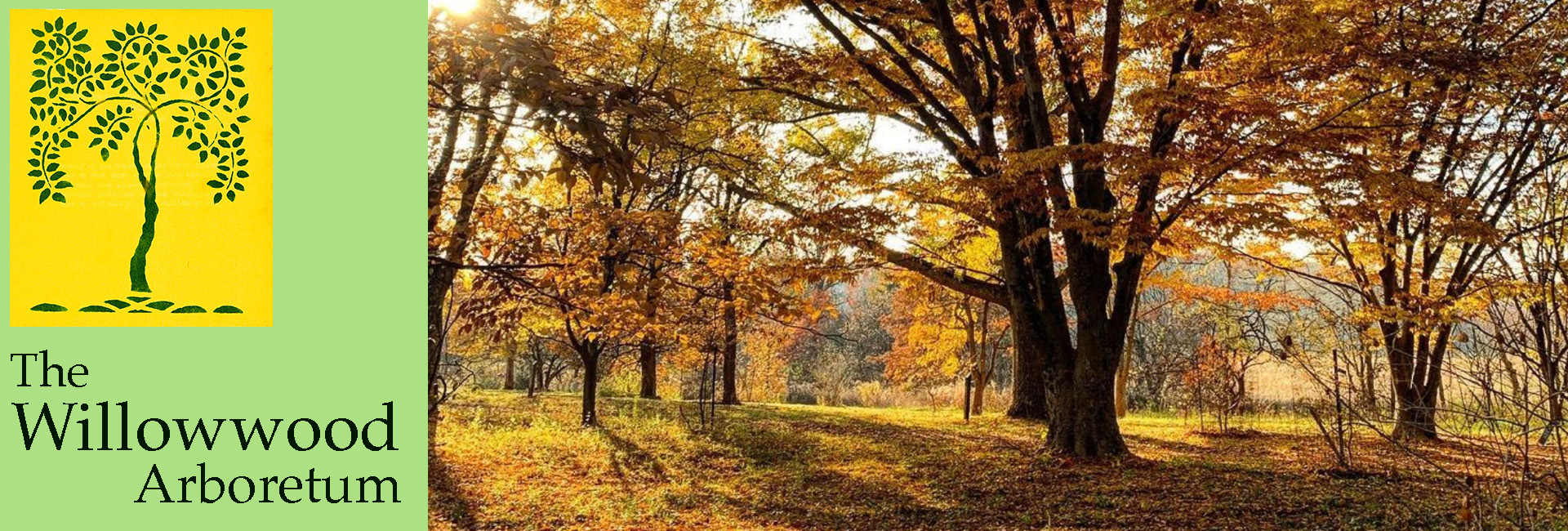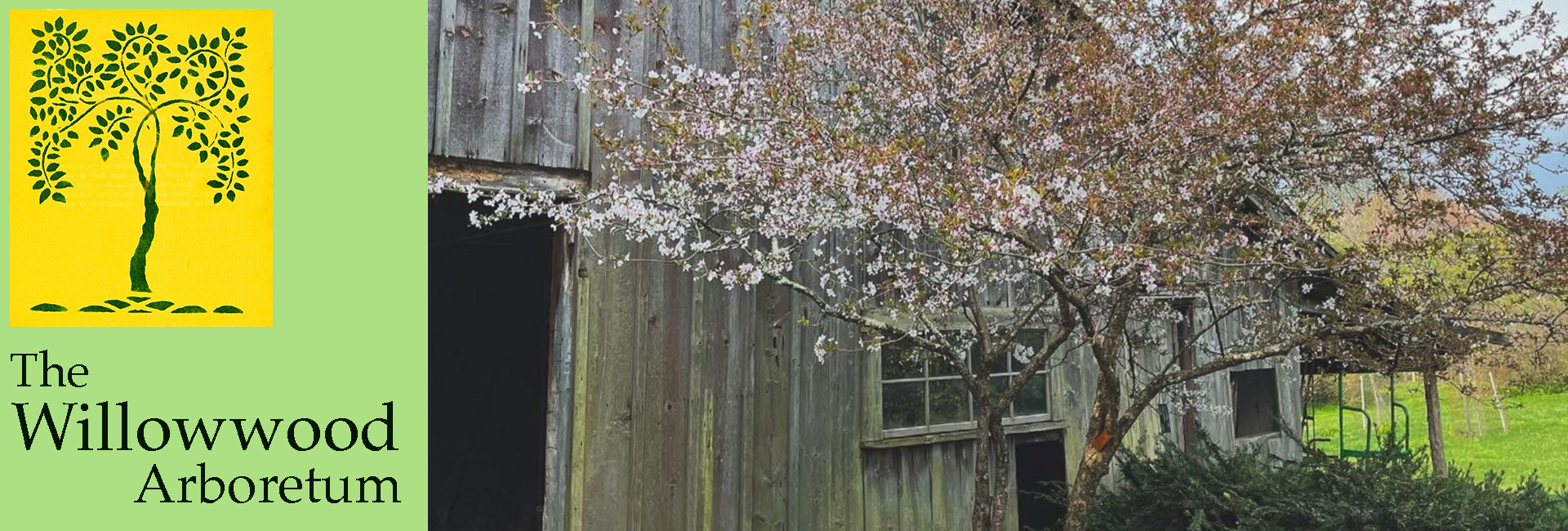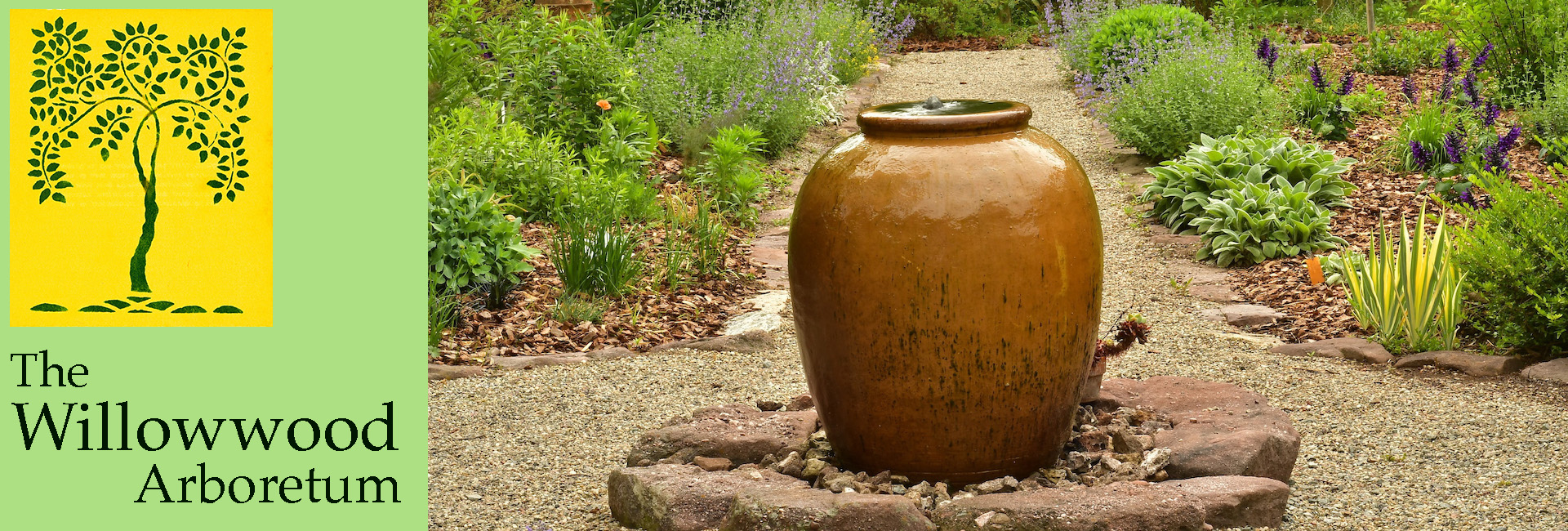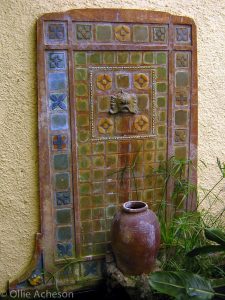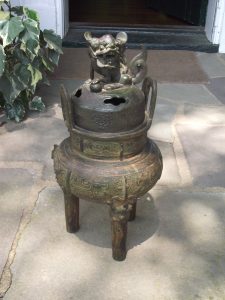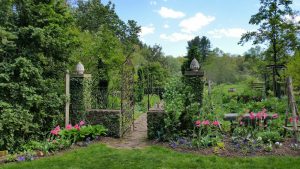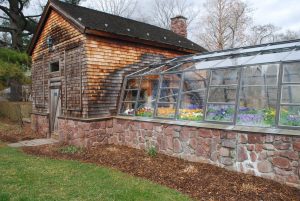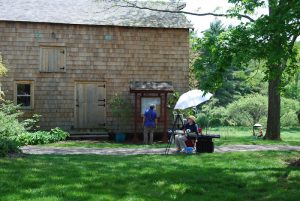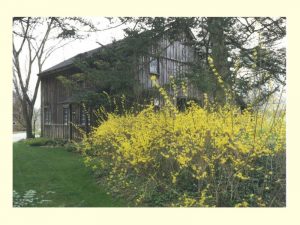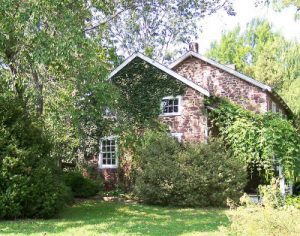Tubbs’ Residence
Portions of the main residence date from 1792 and was built for the Kenneday family who cultivated the land. Outbuildings were added over time to support the farm’s functions. In 1908, after purchasing the property, the Tubbs brothers enclosed the porch, added windows, created an indoor plant space and a larger dining room. Most of the furnishings originated in the Tubbs family and date to the early 19th century. The Asian furniture and decorative pieces were collected by Henry (Japanese decorative pieces) and Robert (Chinese pieces).
Dining Room
The Dining Room, once the center of family life, features an open-hearth fireplace with an intact crane and utensils. Adjacent is a small warming oven.


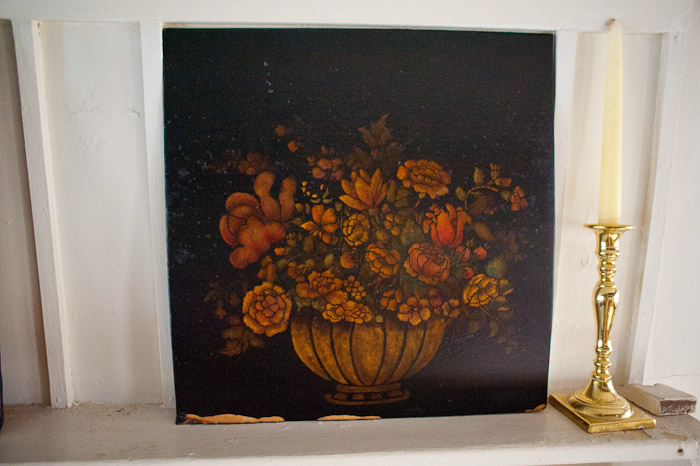
Above the fireplace are three decorative panels that were stenciled by Henry Tubbs.
The formal Front Parlor has a number of Asian pieces. The Chinese ceremonial bronze tripod incense burner is marked ‘Imperial Treasure’ and appears to be several hundreds years old. The wall hangings include six panels depicting family, military and official life. The two large paintings are of the last Empress Dowager and the Emperor and date to circa 1850.
The Book Room is the most lavishly decorated architecturally and dates to early 19th century. It is believed that the ornate classic molding, pilasters, paneled walls and built in bookcases were crafted by a relative of the Kennadays (the original owners) as re-payment for a loan.
In 1912, the Tubbs brothers added a kitchen wing and third floor. A porch was incorporated into the dining room and a entrance portico with features typical of early 20th century Colonial Revival design, was added. In the 1930’s the Lord & Burnham glass conservatory was added with decorative Moravian tiles – a gift of Henry Mercer, a family friend and tile manufacturer associated with the American Arts and Crafts movement.
The gardens were planned to align with the house. From the front door the eye is drawn to the beautiful wrought iron gate opening to the Cottage Garden and then beyond to the hillside and its changing colors. With the back door open, the eye is drawn down the center aisle of Pan’s Garden to the statue at the end. In this way, the house and landscape are integrated.
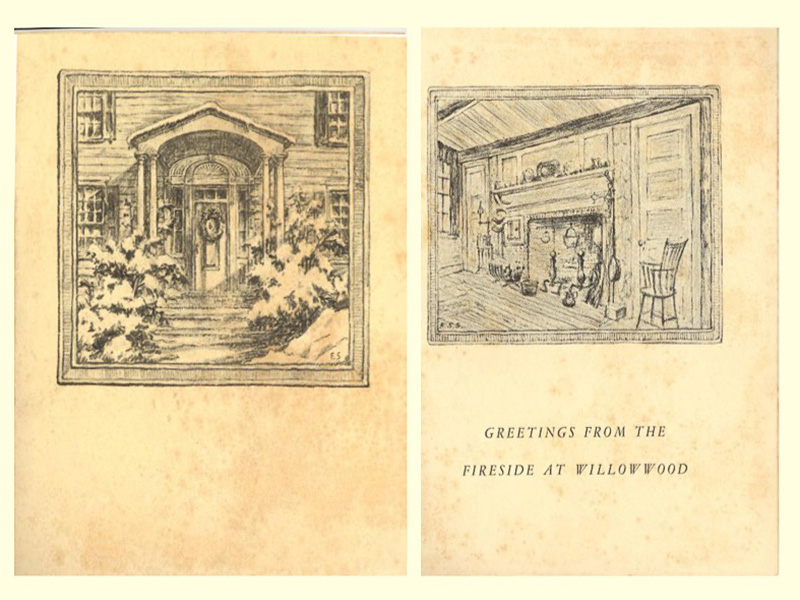

Myers Center / the Stone Barn
Straight ahead of the parking area: Constructed of local Roxbury Puddingstone circa 1790, it was used as a barn with farm animals residing within. Today, this structure provides space for programs, meetings and party rentals.

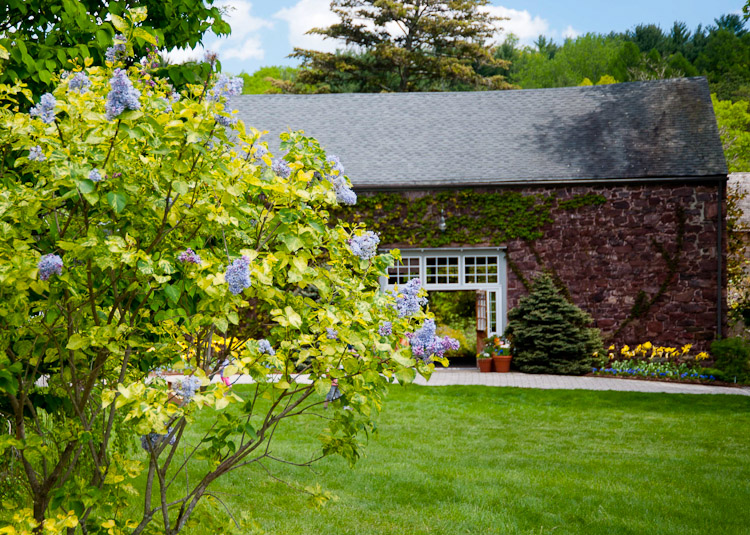
Propagation House
Constructed in 2000 on the site of a former greenhouse and dedicated in honor of long time supporter Helen R. Gardiner, there is an active propagation program which continues the tradition of the Tubbs and Dr. Blackburn. Today, plants grown here are used throughout the Morris County Park Commission facilities. Mid/End March is the best time to see Spring flowers through the glass windows as they welcome Spring.
Other Buildings
Shingle Barn (Public Restroom Located Here)
To your right by the wisteria arbor as you enter from the parking area. Originally used for livestock, this now serves as a maintenance and supply area.
Red Barn
Once used as a garage for farm equipment, modern landscaping and nursery equipment is now stored here. Just beyond is the “Hoop House” used as a plant nursery.
The Stone Cottage
Just past the Tubbs’ residence, another Puddingstone structure is on your right. A possible residence for farm laborers – a date on a stone on the façade says 1826 – its design includes some distinct Greek Revival features. On the corner is the NJ Champion Dawn Redwood.



Click here to return to Willowwood’s Garden Descriptions.
